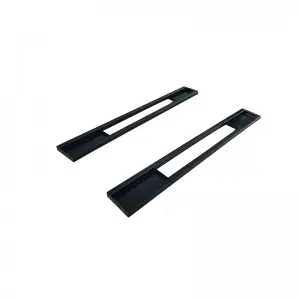****
The cylinder is a fundamental geometric shape defined as a three-dimensional solid with two parallel circular bases connected by a curved surface. This seemingly simple structure possesses a rich history and a wide range of applications across various disciplines, including engineering, physics, architecture, and everyday life. Understanding the properties and significance of cylinders can provide valuable insights into their utility and inspire innovation in various fields.

Exploring the Fascinating World of Cylinders: Their Structure, Applications, and Importance in Various Fields of Science and Engineering
At its core, the cylinder is characterized by its height (or length) and radius. The perfect symmetry of its structure leads to several intriguing properties. For instance, the volume of a cylinder can be calculated using the formula V = πr²h, where “r” represents the radius of the circular base and “h” signifies the height. This formula highlights how increasing the height or radius of a cylinder impacts its volume, making it crucial for engineers and designers when calculating material requirements for projects ranging from storage tanks to architectural components.
In engineering, cylinders are ubiquitous and are often encountered in fluid mechanics, thermodynamics, and structural analysis. The cylinder’s capacity to withstand pressure makes it an ideal choice for designing pressure vessels, pipes, and tanks. For instance, in the oil and gas industry, cylindrical tanks are widely used for the storage of liquids, requiring careful consideration of the materials used for construction to prevent leaks and ensure safety.
Additionally, the design of hydraulic cylinders—the core component in many machines and equipment—exemplifies the critical role of cylinders in engineering applications. Hydraulic cylinders convert hydraulic energy into mechanical work, making them crucial for a variety of equipment, including construction machinery, automotive systems, and even aircraft. Understanding the mechanics of these cylinders involves studying the interplay of pressure, force, and motion, which is essential for optimizing performance and efficiency.
In the realm of physics, cylinders present intriguing opportunities for exploration. The behavior of a solid cylinder rolling down an incline provides insight into concepts such as angular momentum and the moment of inertia. Unlike a disk or a hollow cylinder, a solid cylinder exhibits unique characteristics while rolling, a factor that is important in various applications like robotics, where the design of wheels and movement mechanisms often includes cylindrical shapes.

Exploring the Fascinating World of Cylinders: Their Structure, Applications, and Importance in Various Fields of Science and Engineering
Architecturally, cylinders contribute to the aesthetics and functionality of structures. Many iconic buildings feature cylindrical elements, such as columns and towers, which not only provide support but also enhance the visual appeal of the structure. The use of cylindrical shapes allows architects to create spaces that are both functional and visually striking. For example, the cylindrical shape of the Guggenheim Museum in New York, designed by Frank Lloyd Wright, demonstrates how a simple geometric form can become iconic due to its innovative use in design.
Beyond engineering and architecture, the concept of the cylinder finds application in everyday items. For example, cans, bottles, and jars all embody the cylindrical shape. The packaging industry heavily relies on this practical design, which maximizes space efficiency and ease of storage. The ease with which cylindrical objects can be manufactured, filled, and transported has made them a staple in consumer products.

Exploring the Fascinating World of Cylinders: Their Structure, Applications, and Importance in Various Fields of Science and Engineering
Moreover, in the decorative arts, cylinders play a role in the design of vases, candle holders, and lamps. Their elegant proportions and symmetry not only serve functional purposes but also captivate aesthetic senses, making them popular choices in art and design.
In conclusion, the cylinder is much more than just a basic geometric shape; it is a vital component in various fields, from engineering to architecture and beyond. Its structural integrity, efficient volume usage, and aesthetic qualities inspire creativity and innovation. By exploring the properties and applications of cylinders, we gain appreciation for their significance in both technical fields and daily life. As we continue to develop new technologies and designs, the humble cylinder will undoubtedly remain an essential element influencing the way we create, build, and interact with the world around us.k Lift Accessories




